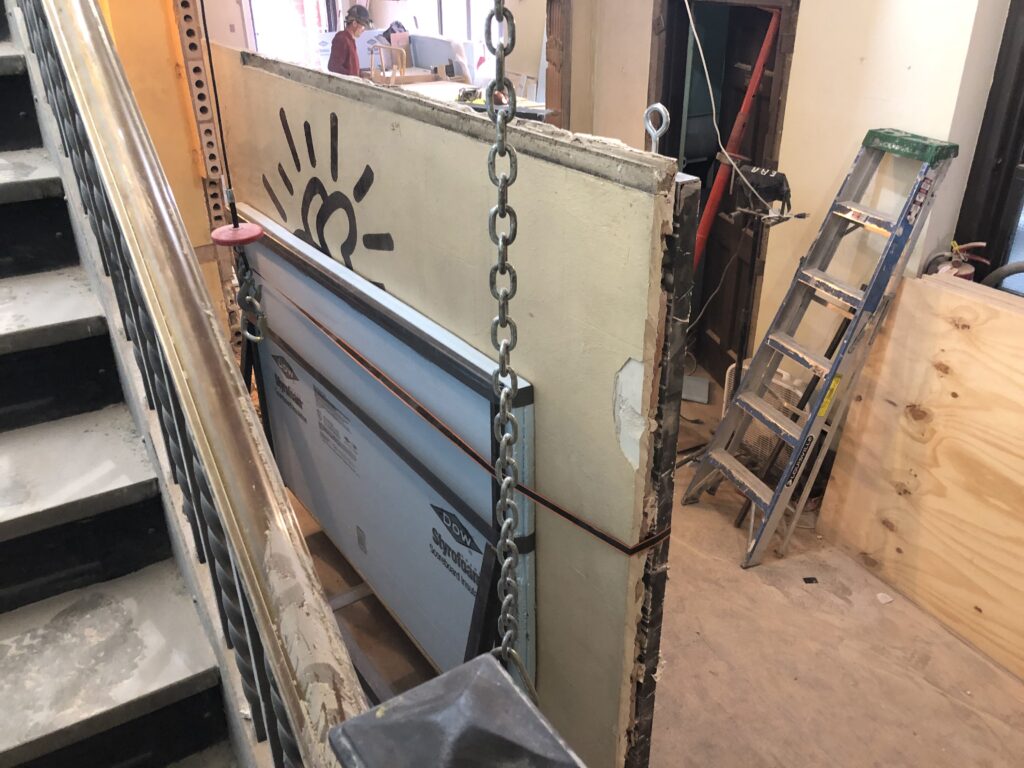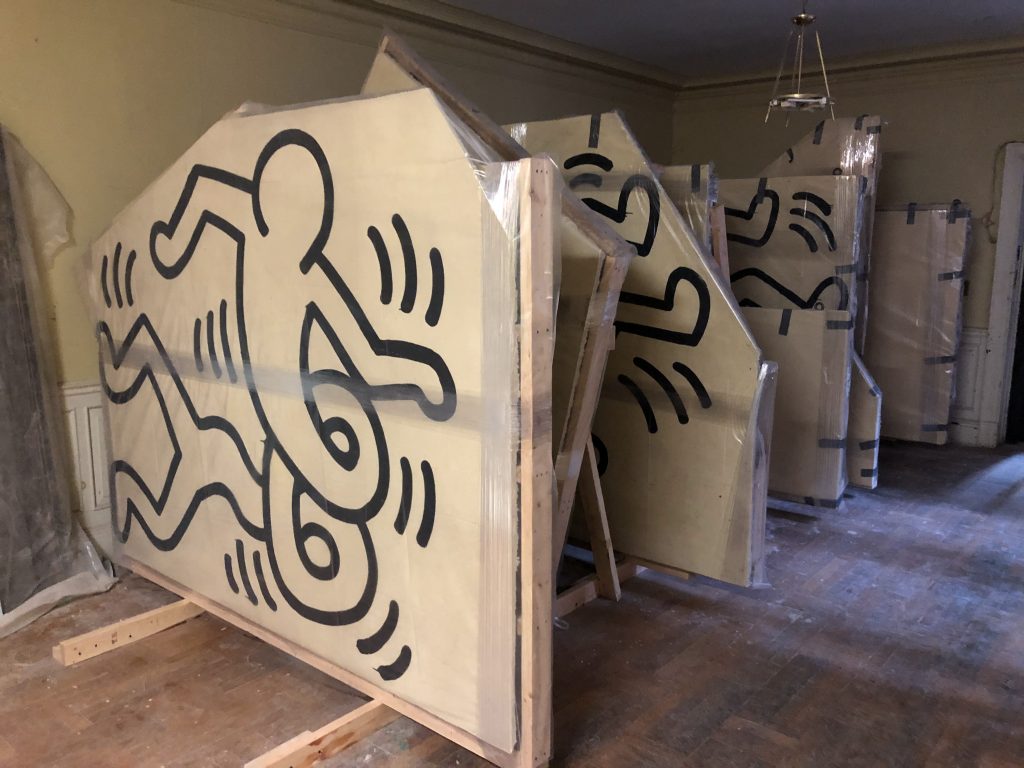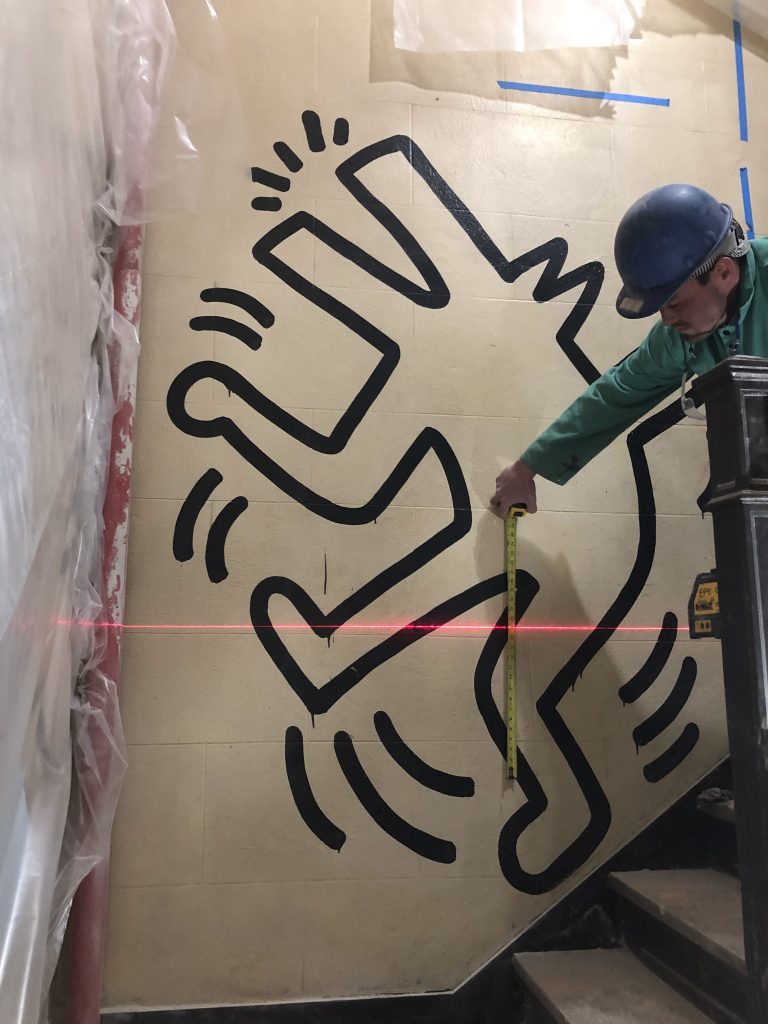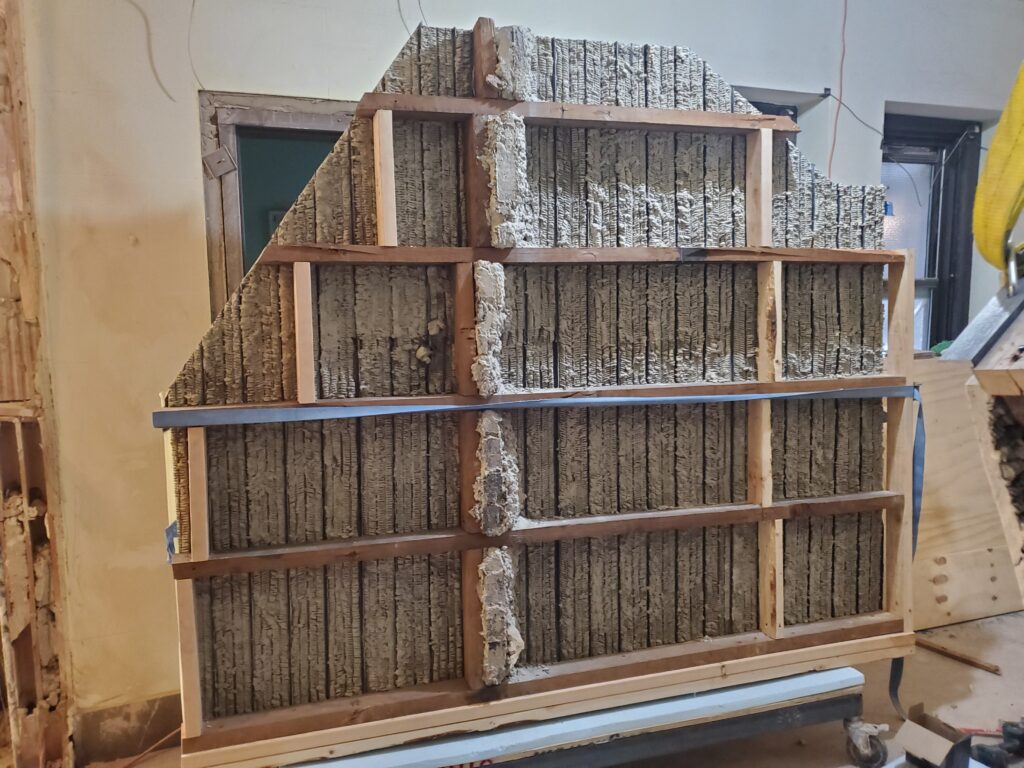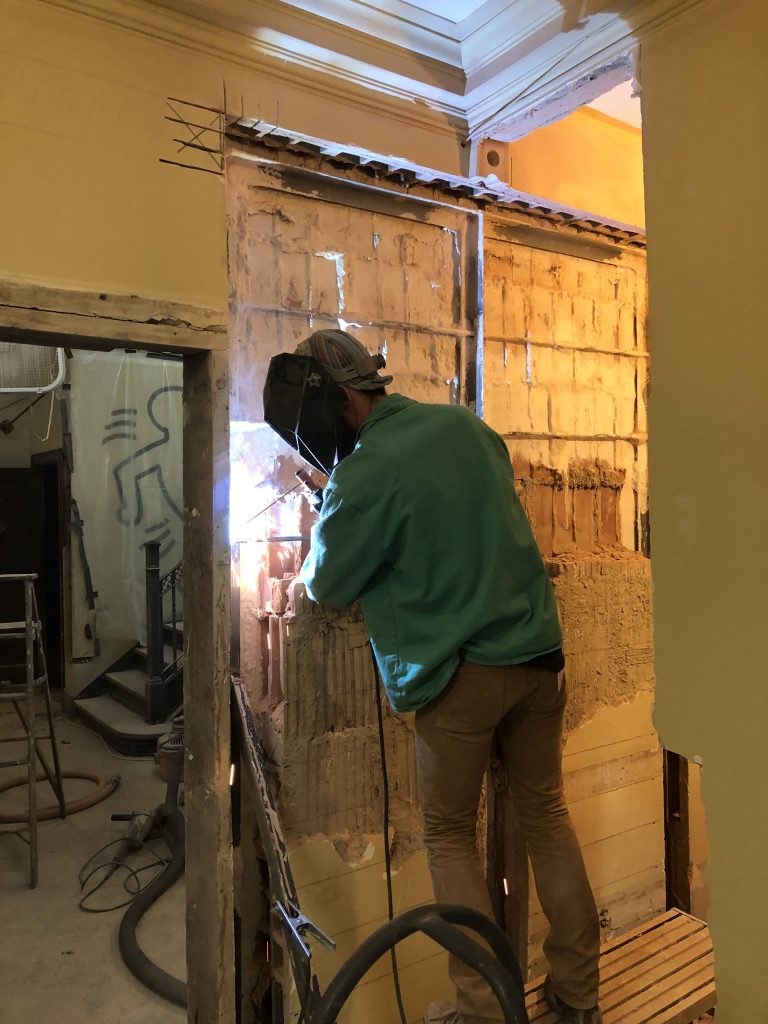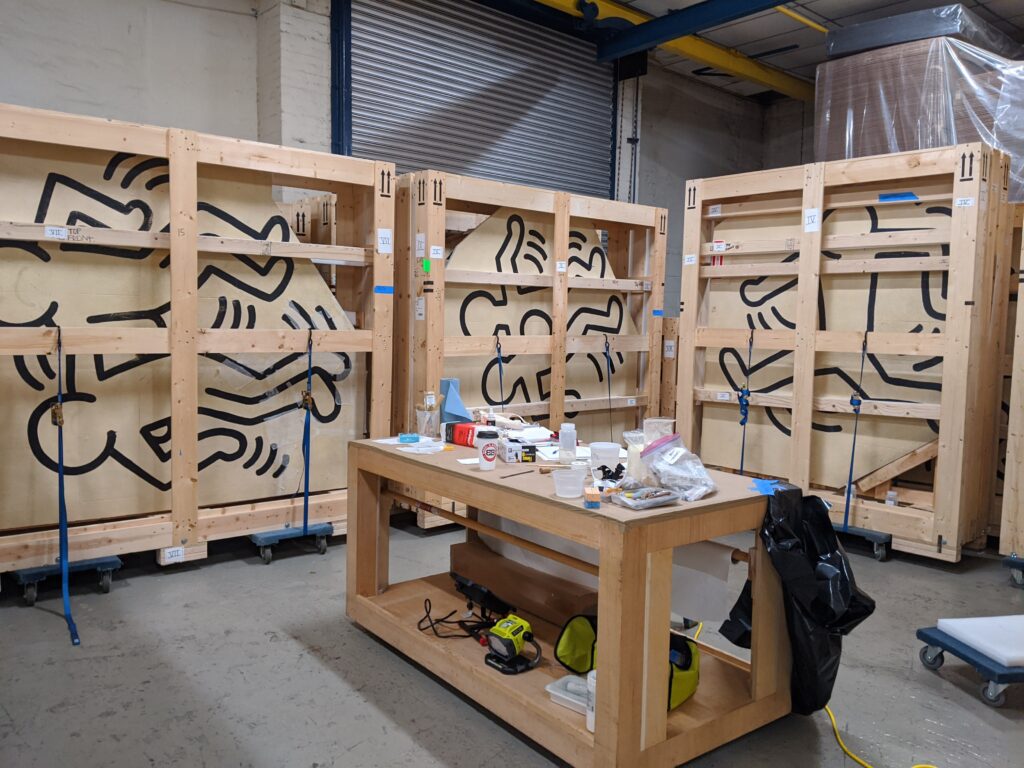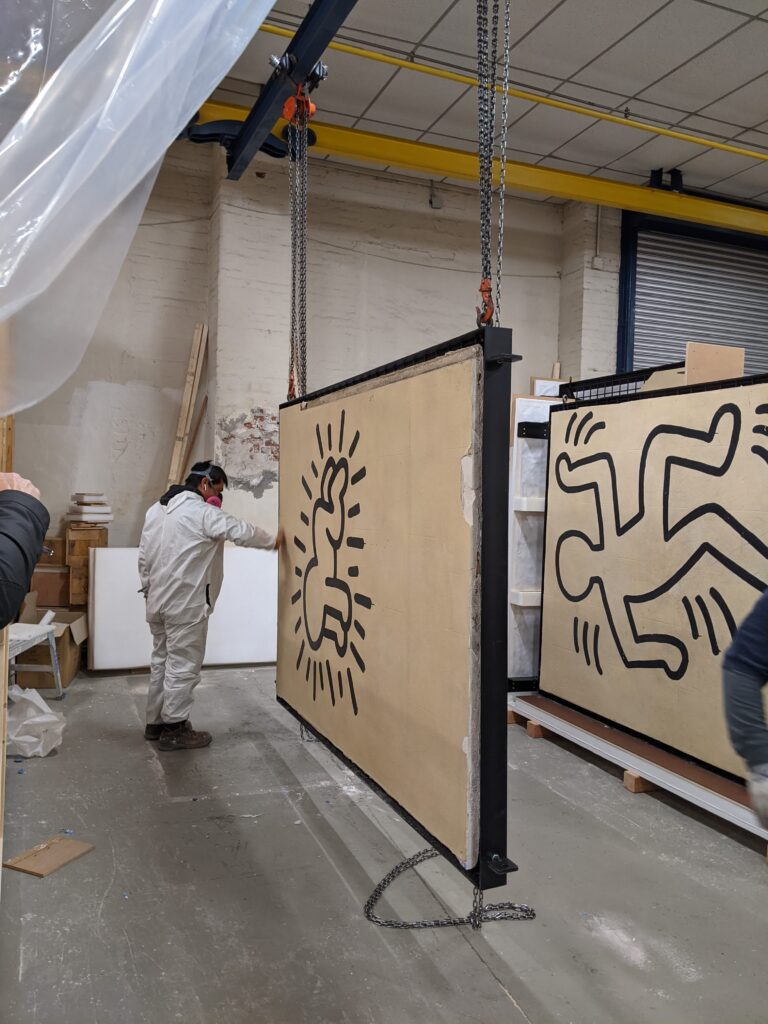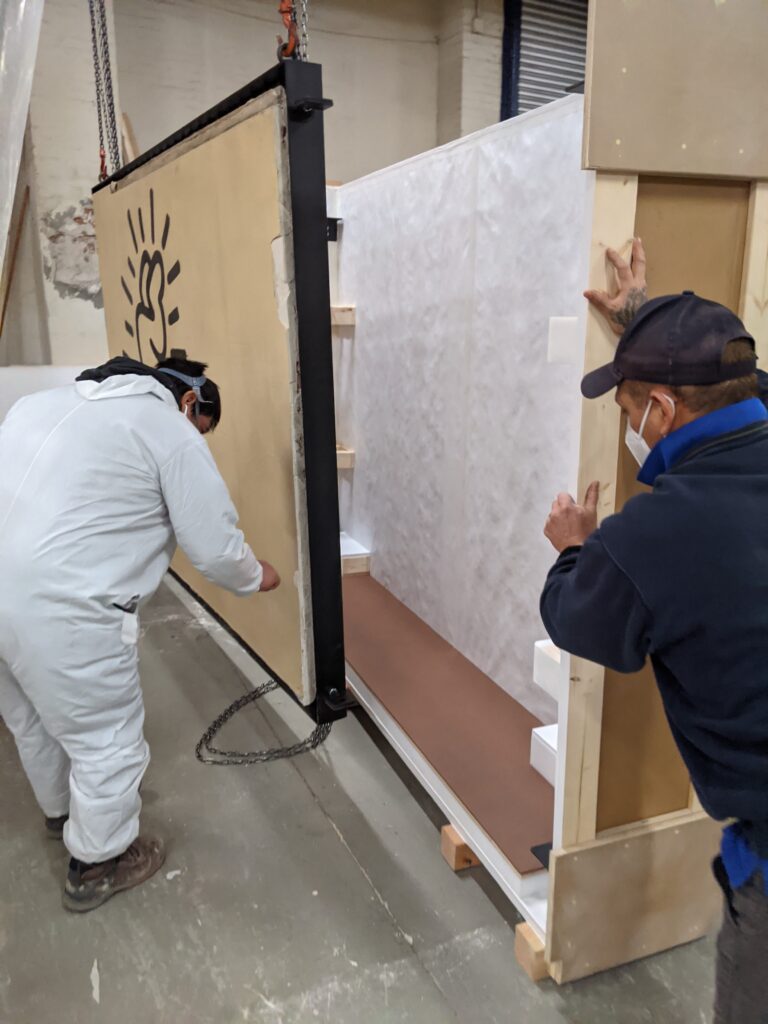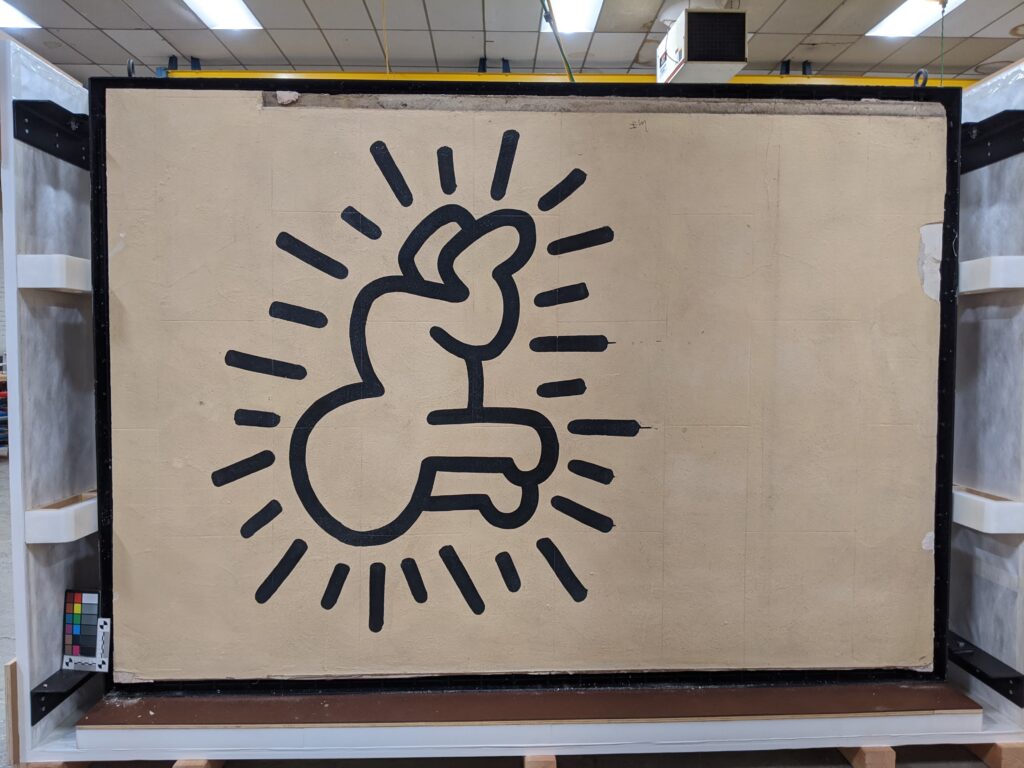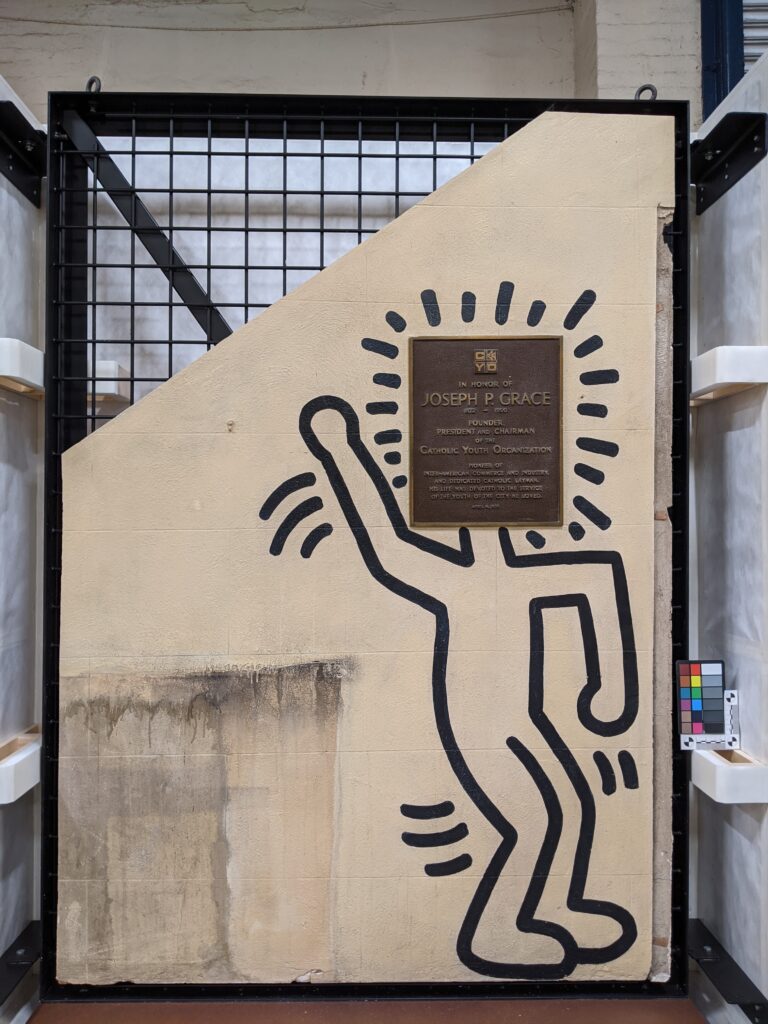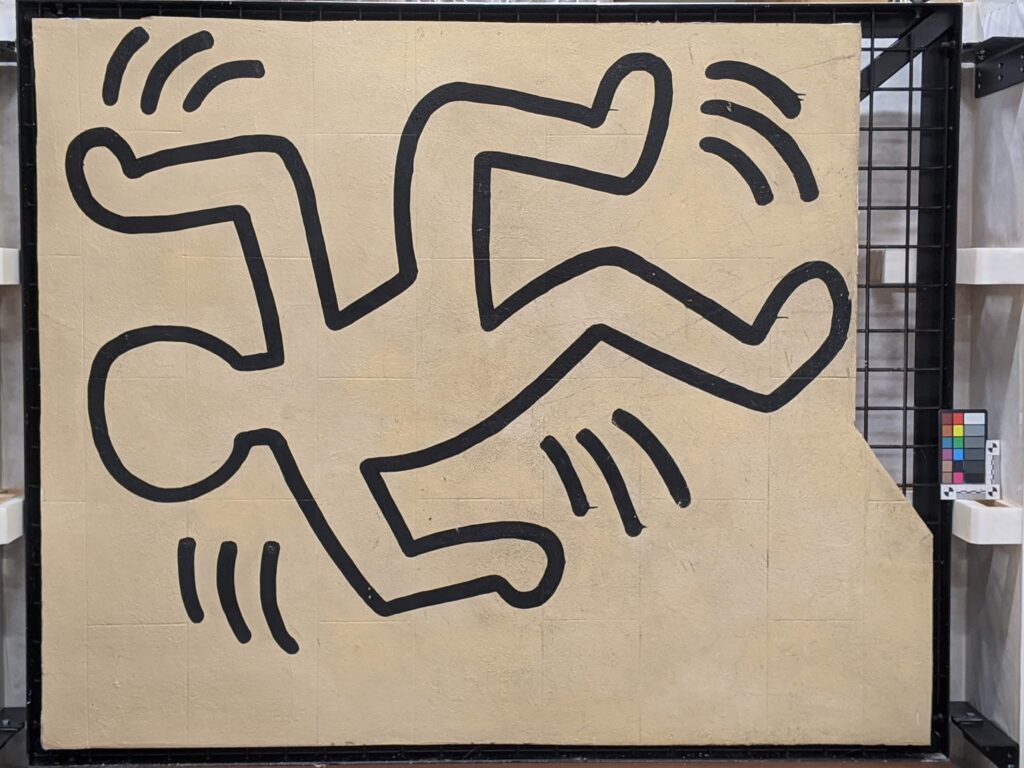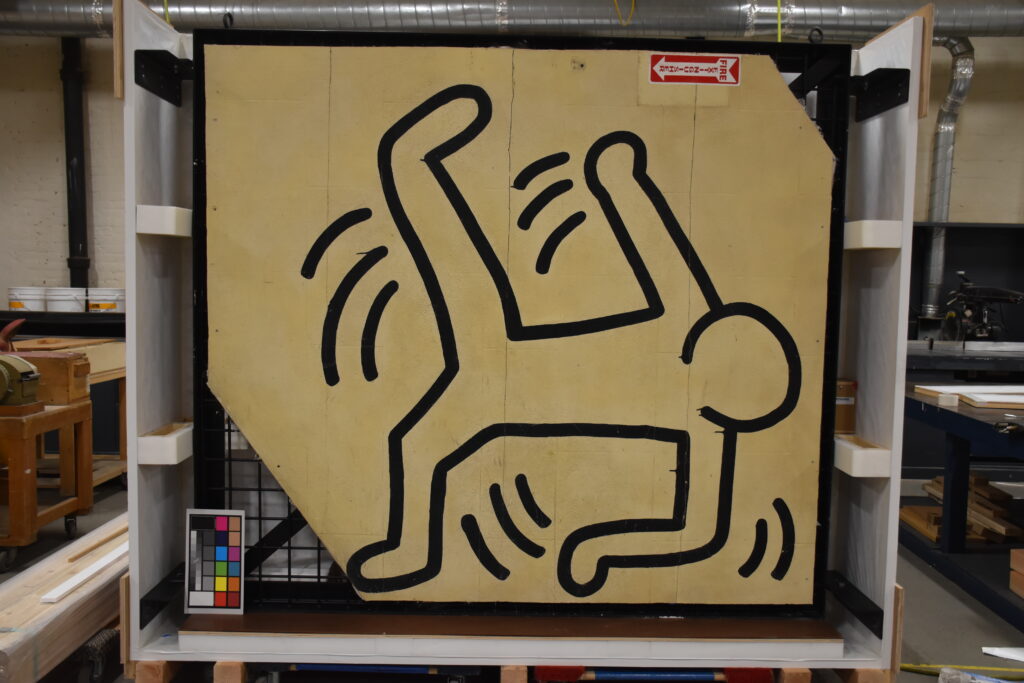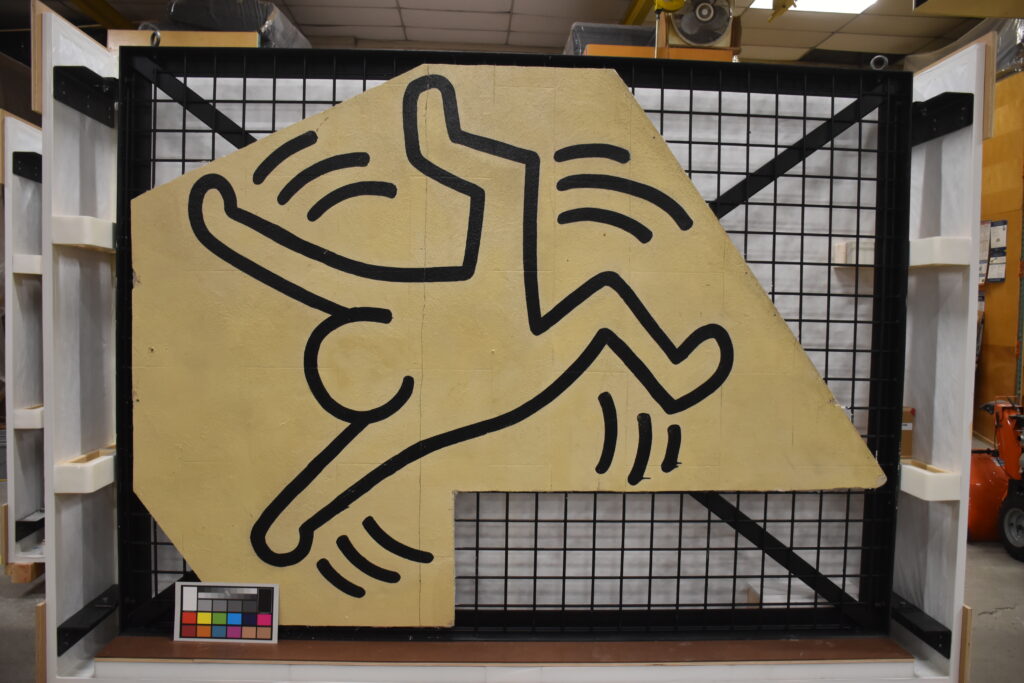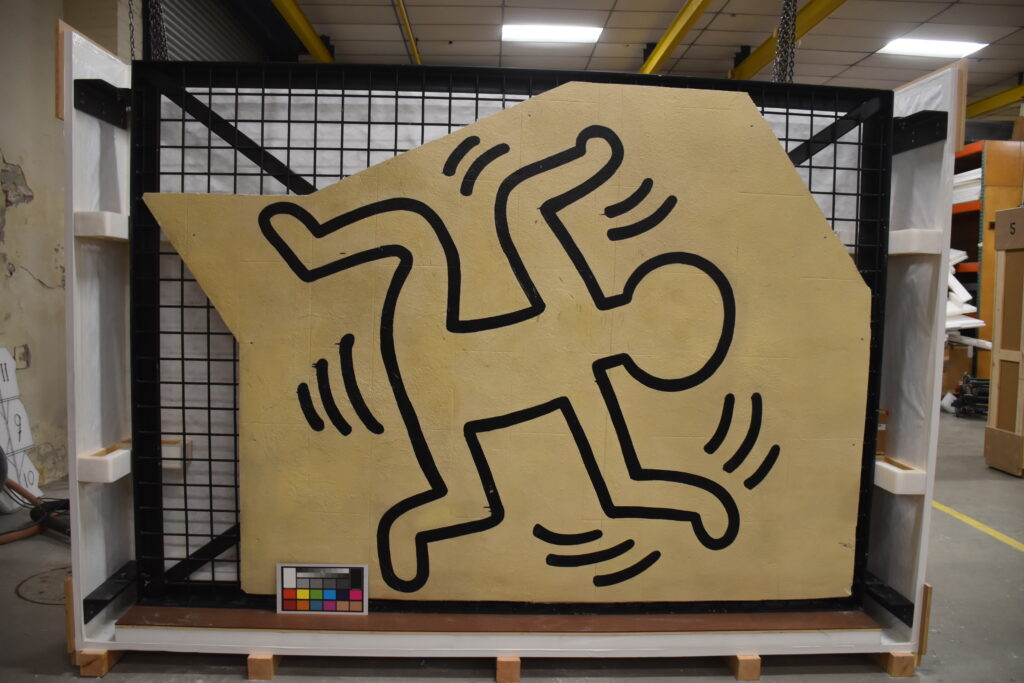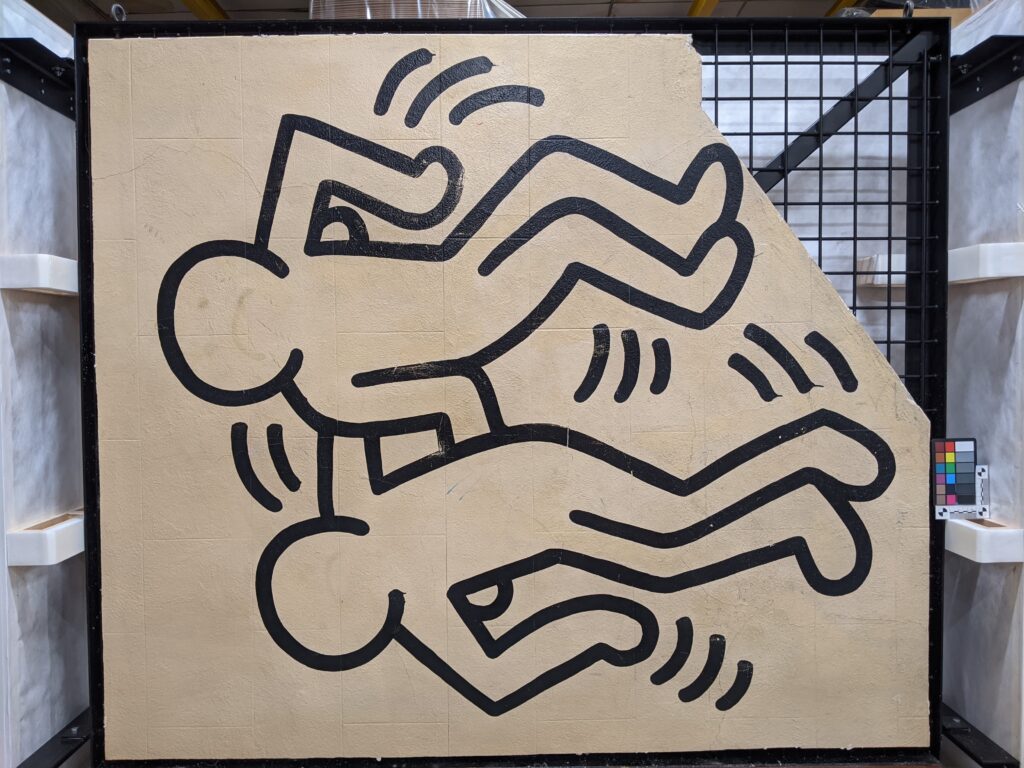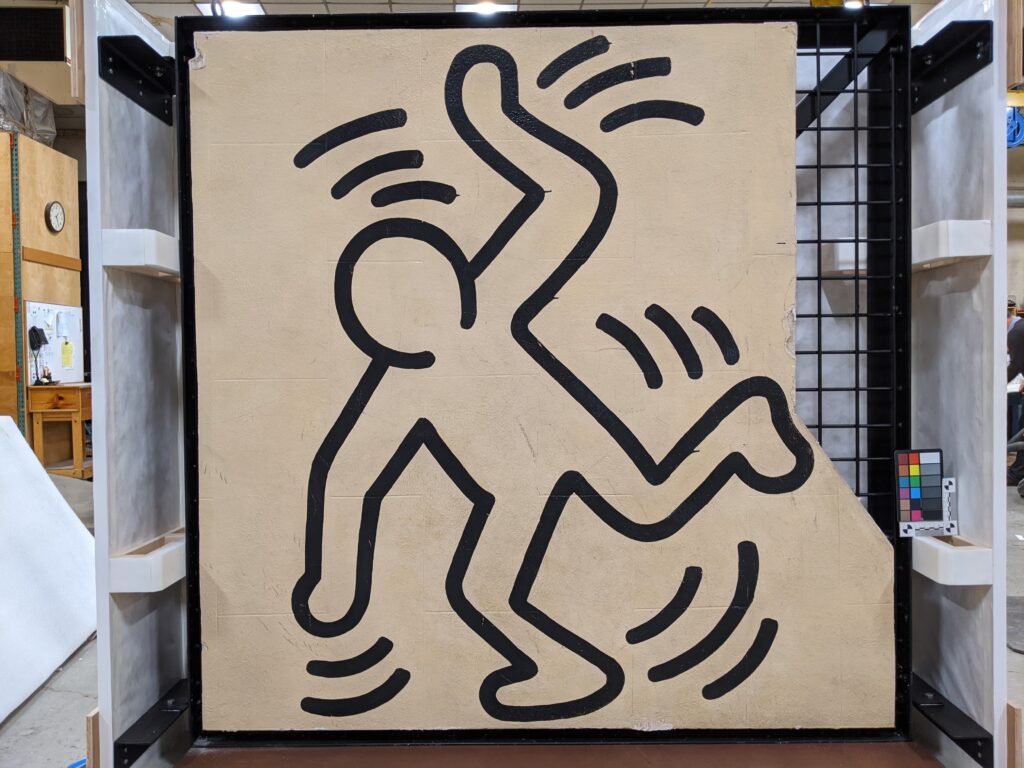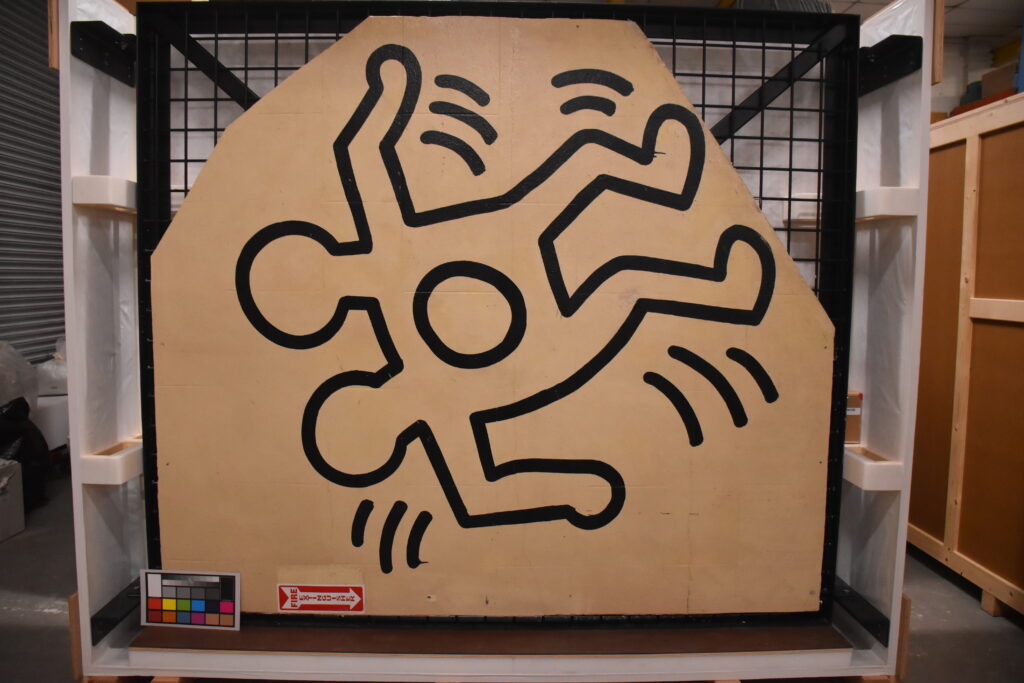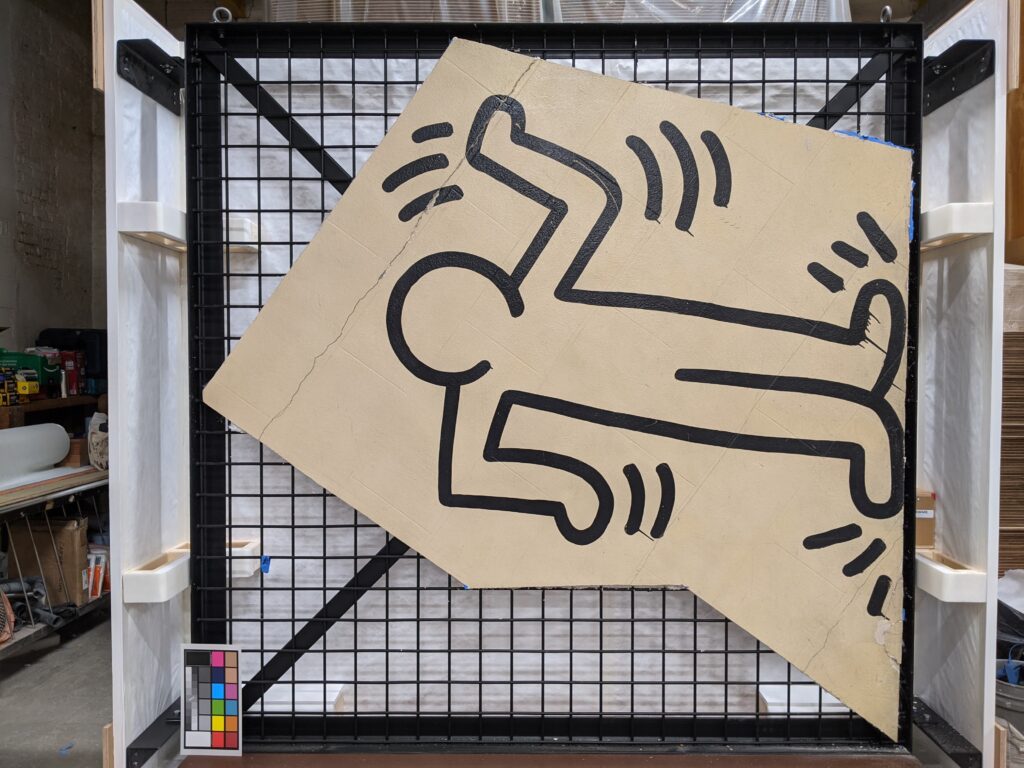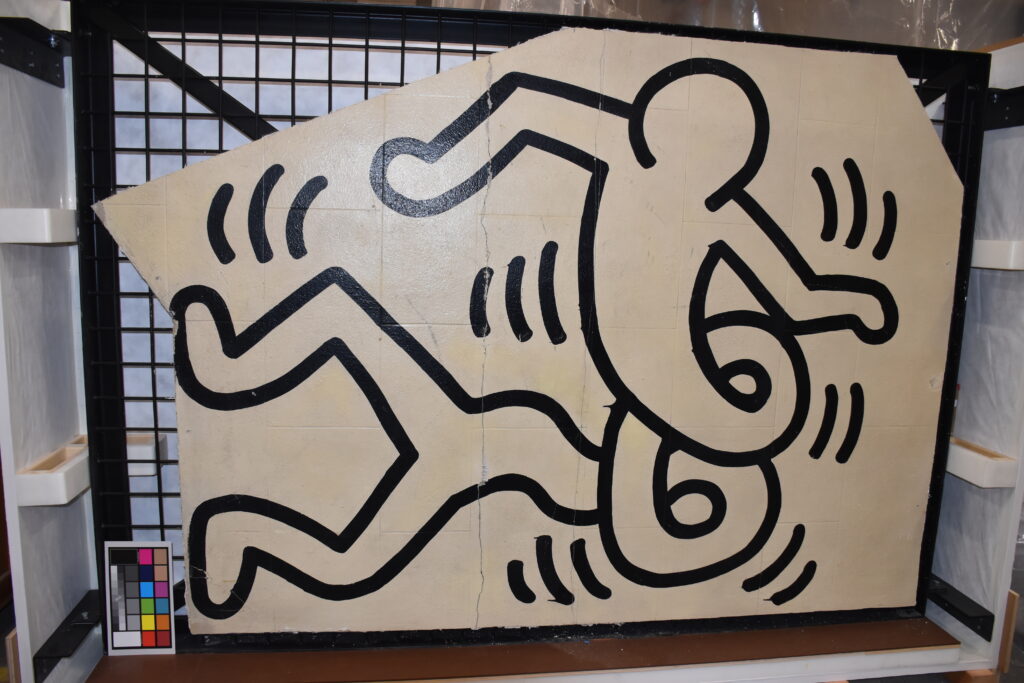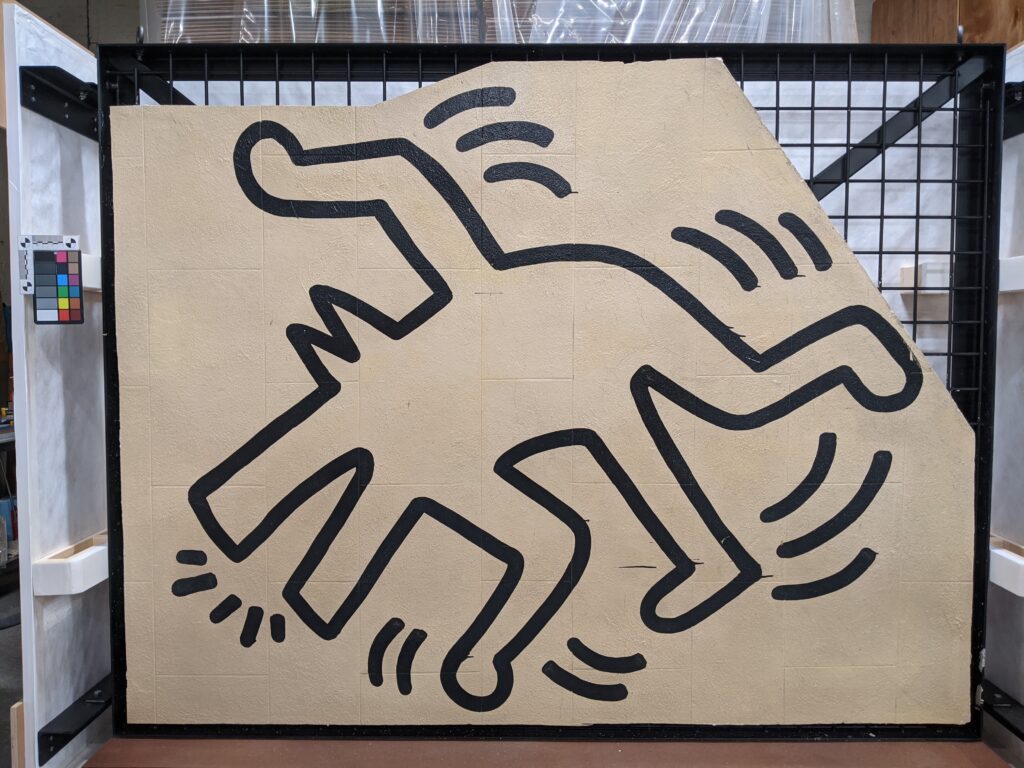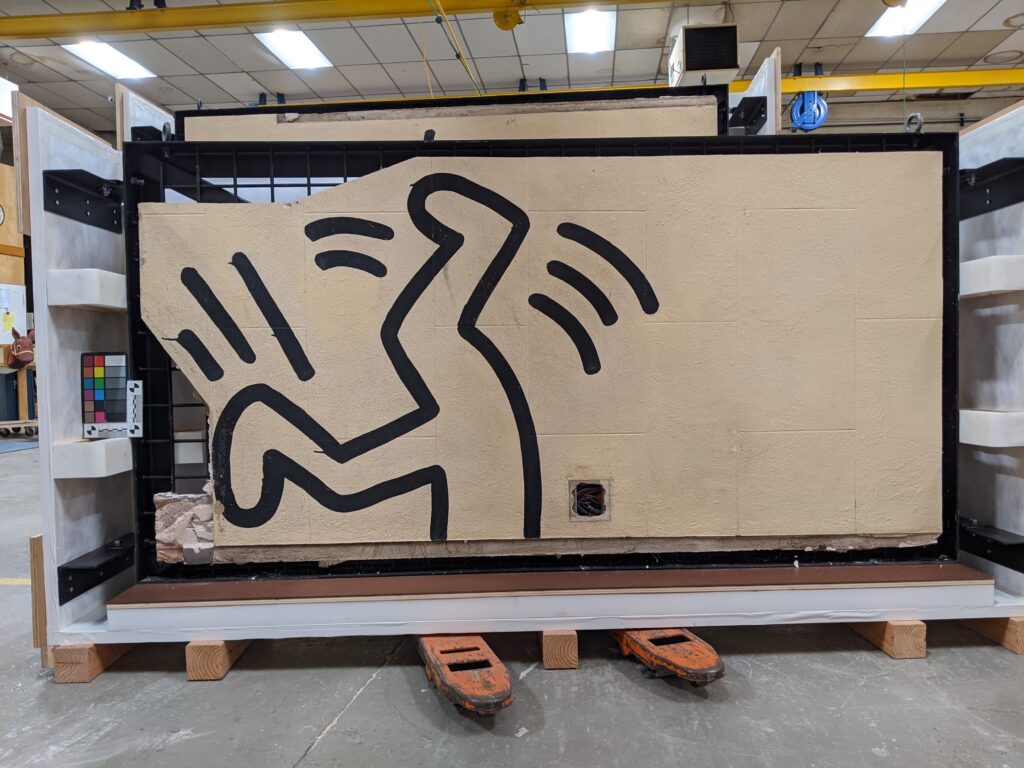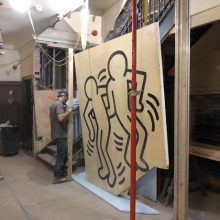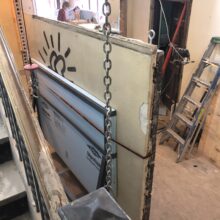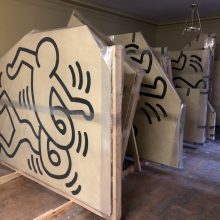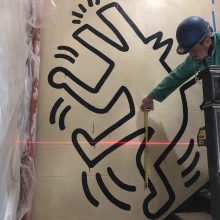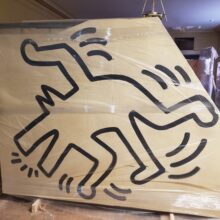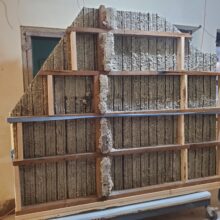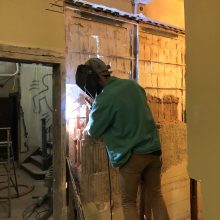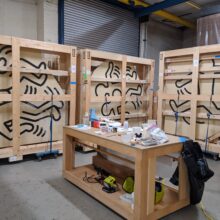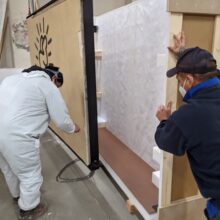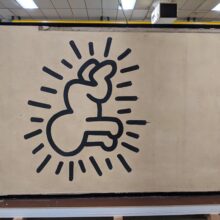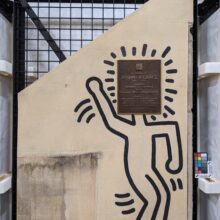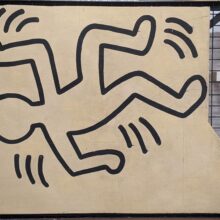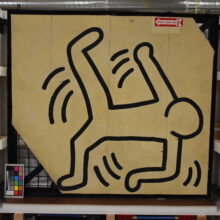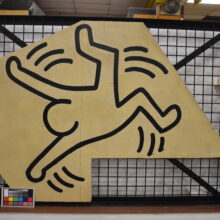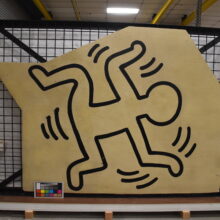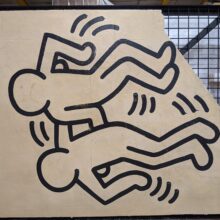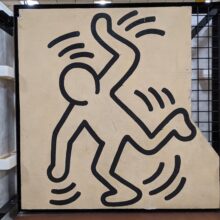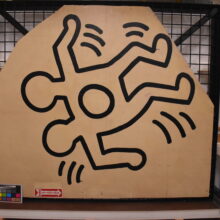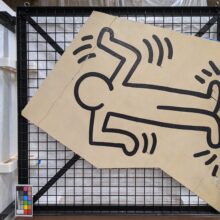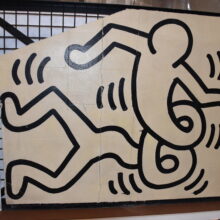Keith Haring Grace House Murals
In the early 1980s, Keith Haring painted what would become one of his most well-hidden and least known murals along two flights of stairs inside Grace House, a former Catholic Youth Center on Manhattan’s Upper West Side, owned by the Church of the Ascension.
In 2017, EverGreene was engaged by the Church of the Ascension to conduct feasibility studies to determine if the murals could be salvaged, as the building was slated for sale and would likely undergo a gut renovation in the future. Through this testing and extensive proof-of-concept development, EverGreene devised a method to remove the figures as their own individual pieces, while respecting their original context within the building; for example, an adjacent doorway that was integral to the design of one of Haring’s “diving” figures was also removed.
Before salvage commenced, EverGreene conservators documented the murals and performed paint consolidation to ensure paint loss would not occur during their removal. Additionally, each mural, which weighed between 1,500 to 1,800 pounds each (with frames installed), was outfitted with a custom steel frame that would strengthen the wall it was painted on and served as a mechanism by which they could be carefully hoisted down to the ground floor.
The new owner engaged EverGreene to design and install a permanent support and handling armature for each of the 13 panels for ease of transport and display in a variety of settings. In our studio, EverGreene technicians installed backing materials and steel frames with rigging points, and stabilized plaster and paint. The murals were encased for transport and mounted by MCA Denver for their first traveling exhibition.
Through EverGreene’s careful execution and the Church’s extensive due diligence, the thirteen murals were all salvaged as planned and in exceptional condition and were sold through Bonhams auction in New York in November 2019, being the first Keith Haring murals ever to be auctioned.
“EverGreene Architectural Arts, the firm that excavated the pieces, did so with care, salvaging just a few inches of the wall’s concrete block face and reinforcing it with metal framing along the back. The painted surface was untouched, and the original scuffs, scrapes and cracks remain.“

